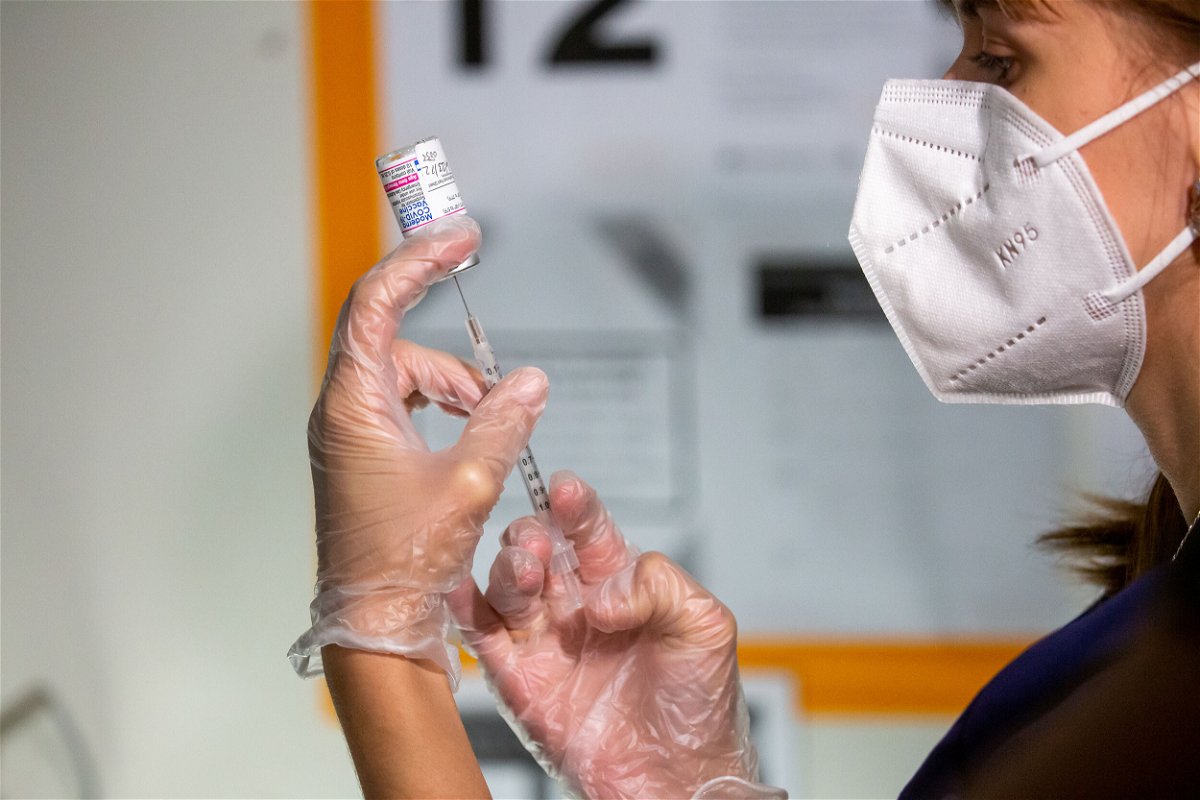Why the Omicron offshoot BA.5 is a big deal

BA.5 caused almost 2 out of every 3 new Covid-19 infections in this country
By Brenda Goodman, CNN
Once again, Covid-19 seems to be everywhere. If you feel caught off-guard, you aren’t alone.
After the Omicron tidal wave washed over the United States in January and the smaller rise in cases in the spring caused by the BA.2 subvariant, it might have seemed like the coronavirus could be ignored for a while. After all, the US Centers for Disease Control and Prevention estimated in December that nearly all Americans had been vaccinated or have antibodies from a past infection. Surely all that immunity bought some breathing room.
But suddenly, many people who had recovered from Covid-19 as recently as March or April found themselves exhausted, coughing and staring at two red lines on a rapid test. How could this be happening again — and so soon?
The culprit this time is yet another Omicron offshoot, BA.5. It has three key mutations in its spike protein that make it both better at infecting our cells and more adept at slipping past our immune defenses.
In just over two months, BA.5 outcompeted its predecessors to become the dominant cause of Covid-19 in the United States. Last week, this subvariant caused almost 2 out of every 3 new Covid-19 infections in this country, according to the latest data from the CDC.
Lab studies of antibodies from the blood of people who’ve been vaccinated or recovered from recent Covid-19 infections have looked at how well they stand up to BA.5, and this subvariant can outmaneuver them. So people who’ve had Covid as recently as winter or even spring may again be vulnerable to the virus.
“We do not know about the clinical severity of BA.4 and BA.5 in comparison to our other Omicron subvariants,” CDC Director Dr. Rochelle Walensky said at a White House Covid-19 Response Team briefing Tuesday. “But we do know it to be more transmissible and more immune-evading. People with prior infection, even with BA.1 and BA.2, are likely still at risk for BA.4 or BA.5.”
A ‘full-on’ wave
The result is that we’re getting sick in droves. As Americans have switched to more rapid at-home tests, official case counts — currently hovering around 110,000 new infections a day — reflect just a fraction of the true disease burden.
“We estimate that for every reported case there are 7 unreported,” Ali Mokdad, professor of health metrics sciences at the University of Washington’s Institute for Health Metrics and Evaluation, wrote in an email.
Other experts think the wave could be as much as 10 times higher than what’s being reported now.
“We’re looking at probably close to a million new cases a day,” Dr. Peter Hotez said on CNN. “This is a full-on BA.5 wave that we’re experiencing this summer. It’s actually looking worse in the Southern states, just like 2020, just like 2021,” said Hotez, dean of the National School of Tropical Medicine at the Baylor College of Medicine in Houston.
That puts us in the range of cases reported during the first Omicron wave, in January. Remember when it seemed like everyone everywhere got sick at the same time? That’s the situation in the United States again.
It may not seem like a very big deal, because vaccines and better treatments have dramatically cut the risk of death from Covid-19. Still, about 300 to 350 people are dying on average each day from Covid-19, enough to fill a large passenger jet.
“That is unacceptable. It’s too high,” Dr. Ashish Jha, coordinator for the White House Covid-19 Response Team, said at Tuesday’s briefing.
Daily hospitalizations are also climbing in the United States. The fraction of patients needing intensive care is up by about 23% over the past two weeks. And other countries are experiencing BA.5 waves, too.
“I am concerned that cases of Covid-19 continue to rise, putting further pressure on stretched health systems and health workers. I am also concerned about the increasing trend of deaths,” said Tedros Adhanom Ghebreyesus, director-general of the World Health Organization, at a news briefing Tuesday after the agency’s decision to maintain its emergency declaration for Covid-19.
The pandemic, he said, is “nowhere near over.”
What’s at stake with continued spread
There are also more insidious health risks to consider. A recent preprint study that compared the health of people who’d been infected one or more times with Covid-19 found that the risk of new and sometimes lasting health problems rose with each subsequent infection, suggesting that reinfections are not necessarily benign.
Although vaccination reduces the risk of getting long Covid, a certain percentage of people have lasting symptoms after a breakthrough infection.
That’s another reason why high numbers of Covid-19 cases are a big deal: Because the virus is still spreading wildly, it has every opportunity to mutate to make even fitter and more infectious versions of itself. It’s doing this faster than we can change our vaccines, leaving us stuck in the Covid-rinse-repeat period of the pandemic.
On Tuesday, Dr. Anthony Fauci, director of the National Institutes of Allergy and Infectious Diseases, pleaded with Americans to use all available tools to stop the spread of the virus, including masking, ventilation and social distancing.
“We need to keep the levels of virus to the lowest possible level, and that is our best defense. If a virus is not very robustly replicating and spreading, it gives it less of a chance of a mutation, which gives it less of a chance of the evolving of another variant,” Fauci said in a news briefing.
In fact, this is already happening.
Meet BA.2.75
Even as the US comes to terms with BA.5, variant hunters around the world are closely watching another Omicron descendant, BA.2.75. It’s been detected in about 10 countries, including the United States, and seems to be growing quickly in India.
BA.2.75 has nine changes in its spike region that distinguish it from BA.2 and about 11 changes compared with BA.5, according to Tom Peacock, a virologist at Imperial College London.
Several of the mutations in BA.2.75 are in a region of the spike protein known to be an important place for antibodies to bind to stop the virus, said Ulrich Elling, a scientist at the Austrian Academy of Sciences who monitors coronavirus variants for that country.
There’s little information to go on: It’s still not known, for example, how BA.2.75 may compete against BA.5 or whether it causes more severe illness. But experts say it has all the hallmarks of a variant that could go global.
“It spread to many different countries already, so we know that it has some sort of staying power,” said Shishi Luo, associate director of bioinformatics and infectious disease for Helix Labs, which decodes virus samples for the CDC and other clients.
Because of that, and because of changes in the region of the virus that our antibodies look for to shut it down, “we sort of know ahead of time that this one will cause some trouble,” Luo said.
Based on what we know now, she expects that this subvariant could drive a fall Covid-19 wave in the United States.
In the meantime, Jha said, people should get boosters that are available to them to keep their immunity as strong as possible. US health officials emphasized that people who are boosted now will still be able to get an updated shot this fall that includes the BA.4 and BA.5 strains.
Jha specifically urged Americans who are 50 and older, “if you’ve not gotten a vaccine shot this year, go get one now. It could save your life,” he said.
The-CNN-Wire
™ & © 2022 Cable News Network, Inc., a WarnerMedia Company. All rights reserved.



